Daffodils signal spring — bringing us out of the winter doldrums with their cheery yellow faces and swaying forms. Even Wm. Wordsworth was smitten, penning his now beloved verse — “A host of golden daffodils…fluttering and dancing in the breeze” — as an ode to one of the true iconic images of the season.
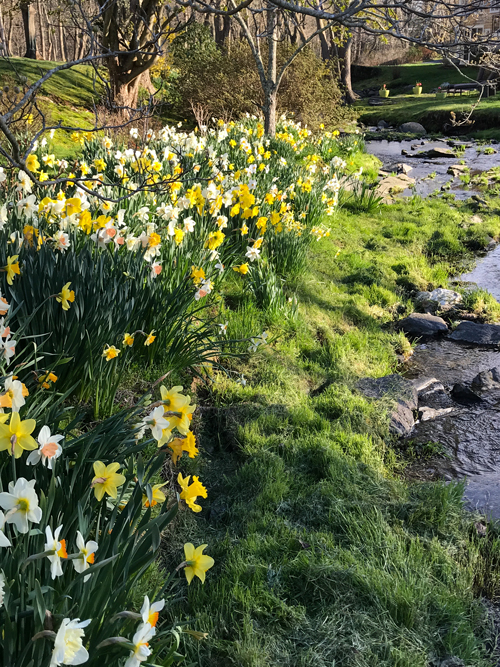
Ours are late coming here in Newport but when they do burst out I always know exactly where I’m heading to first…my friend Allison and Steve Walk’s home up island! Idyllic doesn’t even come close to describing what greets you as you go through their garden gate. Their weathered shingle home is perched on a gurgling brook that runs through the old Glen property, to include a stone bridge that takes you over the water to the woods beyond where more daffodils await.


And early buds of flowering fruit trees are primed to add their beauty to the scene.

But my favorite image is of the daffodils tumbling down to the brook’s edge while it’s course twists and turns curvaceously along its journey.
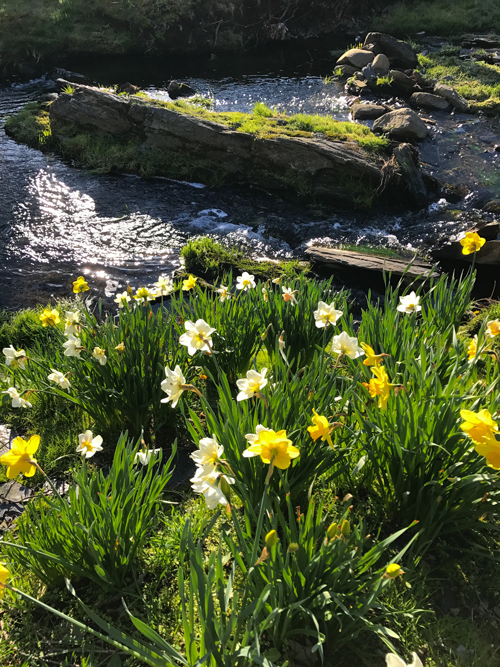
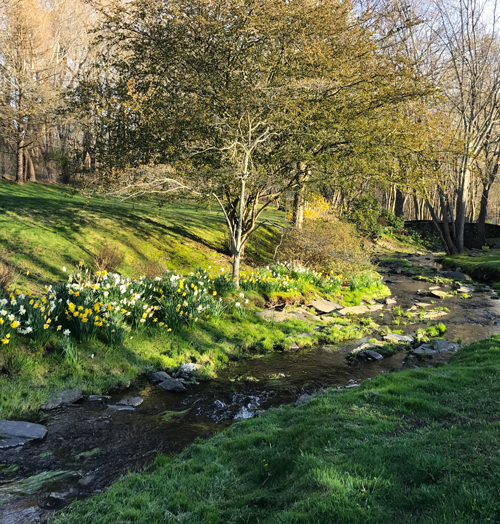
The same rocky outcroppings are to be found among the planted areas, adding a note not usually seen in traditional daffodil landscapes.

The light playing off the glistening wet rocks, the spring green grass and the drifts of daffodils is right out of a story book.
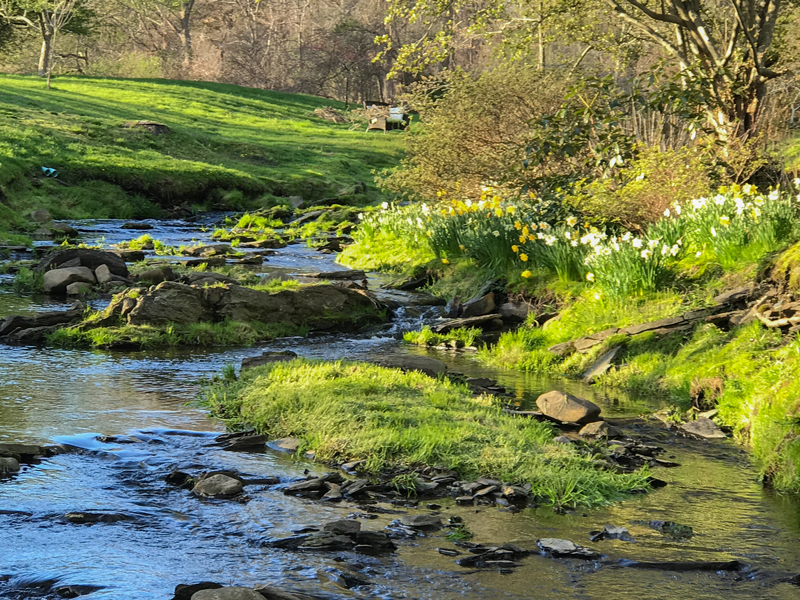
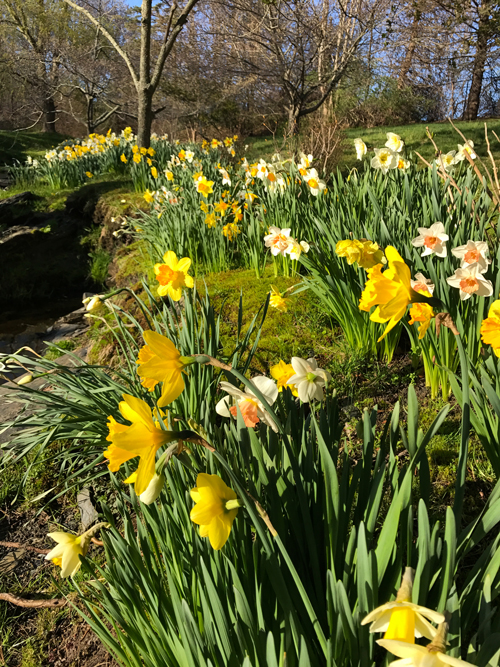
And if you can’t wait until next spring, here’s a secret…
Colorful fact #1 “Daffs”(like their cousins, paper-whites) can be forced indoors to bloom in January. In the Asian culture, it’s believed that good luck will come to your household if these golden beauties are forced into bloom during the Chinese New Year! (Click here for more.)
Colorful fact #2: Their botanic name is narcissus, daffodils are sometimes called jonquils, and in England, because of their long association with Lent, they’re known as the “Lent Lily.”
Colorful fact #3: Unlike most other flower bulbs, squirrels and other pests don’t eat daffodil bulbs because of poisonous crystals in the bulbs and leaves (but don’t plant where dogs like to dig).
Colorful fact #4: Daffodils are best kept in their own arrangement, as they contain a toxic sap which is harmful to other flowers.
Colorful fact #5: Once the flowers have finished blooming, let the leaves yellow (so the plant can rebuild its bulb) before cutting them down….and they’ll continue dividing on their own, year after year.





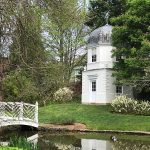
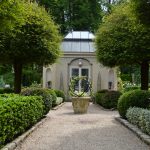



There are so many varieties of these beauties. I love big King Alfred , the pinks, and white one with orange center Look for daffodils that naturalize easily for increased beauty every year. Or if my favs are the minis, so cute among the rocks close to the walks to enjoy. If only they would bloom longer. But I guess why they are so special to us after a long winter
Love looking at Steve’s lovely daffs. But, also am tremendously fond of looking at his “best in the world” silk shades!!
Oh, to have a copy of each of those gorgeous photos! Each is a painting that would keep me entertained with canvas and brushes for a long time!
I can get you those photos, Tall R!! Can’t wait to see you; just tweaking your weekend this morning….xox
I agree with Ruthie’s comment! Beautiful photos and facts I didn’t know about daffodils. No wonder they are the only bulbs I planted in Lake Arrowhead 25 years ago and are the only bulbs will producing flowers!
Hello out there, and love from me in the “other Newport.”